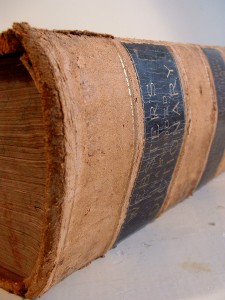
I really want Wordnik, a new web-based “dictionary,” to work. Although I love an old-fashioned, unabridged, doorstop of a dictionary, traditional dictionaries are not that great for my students. Their examples are archaic and stilted, their definitions use words that are just as difficult as the word being looked up, they include too many almost-never-used synonyms, and they don’t include connotations. Learner’s dictionaries are better–for example, they may note that “childish” is insulting while “childlike” is neutral; they use simple definitions; they highlight most frequently used words in red or blue; they often include collocations such as which prepositions are usually used with a verb; and they use easier/shorter sentences. The definitions are more realistic, too. You’ll note that in the example below, several traditional dictionaries link the word “awesome” with the word “awful.” Really? Now, outside of the Bible or Tolkien, when was the last time you heard or wrote “awesome” and immediately thought “awful”? I wonder. I’m aware of the “awe” connection, but we just don’t use it that way on a day-to-day basis anymore. That’s why the Longman Dictionary of American English (the closest learner’s dictionary) says “very impressive, serious, or difficult” and “(spoken) extremely good.” It doesn’t mention “awful.”
Wordnik looks like it might be even better than learner’s dictionaries, someday, although possibly just for advanced learners. On the FAQ page, it says “Wordnik is based on the principle that people learn words best by seeing them in context.” Ah … hmm … sound familiar, teachers? It pulls examples from novels and Twitter, definitions from several dictionaries (no learner dictionary, alas, since there aren’t any free ones online), images from Flickr (since let’s face it, that’s a much better way to define things like food items, colors, items of clothing, types of buildings, etc.), pronunciation files from American Heritage, and the thing I think is the coolest, statistics. The statistics function really fell down on the first word I put in, “awesome.” Check out the cool timeline under statistics–and notice how it says you might expect to see this word once per year. Hmmm. I don’t think that’s right!
Well, things are still under construction, so the statistics feature has the potential to be cool. When English learners are writing an e-mail or essay and are trying to pick the right new word, one thing that often trips them up is that they inadvertently pick a rare or archaic word, and it sounds out of place. (OK, I do this in Japanese and Chinese too–trying to pick the appropriate word out of an electronic dictionary, in particular, is like throwing darts at a dartboard!) Being able to look at a chart and tell that a word was often used in the 1800s but is rarely used now would be pretty nifty, I think. I hope this function gets up to speed soon.
Another nice function mentioned on the About page is collocations and associated vocabulary: “For instance, cheeseburger, milkshake, and doughnut are not synonyms, but they show up in the same kinds of sentences.” That would be really neat, but if you view the entry for “cheeseburger,” it hasn’t been implemented yet (though a LOLcat does currently appear in the Flickr entries).
Wordnik is collaborative and, since it’s brought to you by a group including Erin McKean, the speaker in the the TED talk on lexicography I linked to previously, they’re not picky about what’s considered a “real word.” If you’d like to contribute, sign up! Otherwise, keep an eye on it and we’ll see how it develops. I’m not going to link to it yet on my blog for students (ReadableBlog), but I’m hopeful–especially if someone can develop a CC-licensed learner’s dictionary. (Maybe I can get a grant…I’d actually really love to work on a project like that.)
Leave a Reply